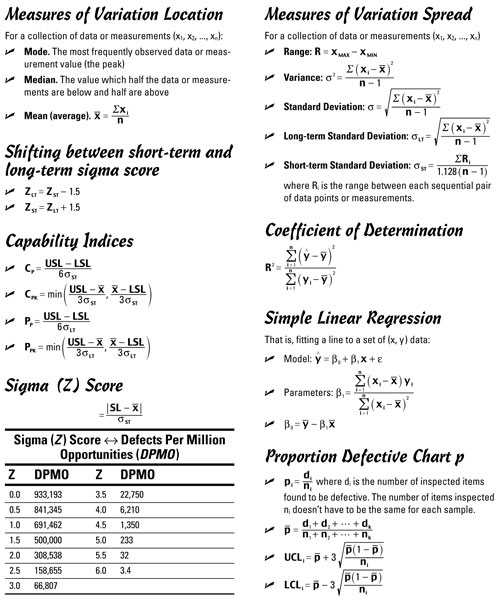

The values may or may not be the same values for the entire population so they are applied with a confidence interval.Ī comparison of means, variance, or proportions is initiated with a The analysis of the sample is used to apply inferences to the entire population. (You may have more than one x in your process. The x refers to your original inputs, which you transform or otherwise manipulate to turn into the finished product. And if we check the sigma accuracy table, we will know that how many defects, the process may be producing. For this reason a sampling strategy is applied. Work out the mean In the formula above (the greek letter 'mu') is the mean of all our values. Formula for Six sigma is also called ‘Z score’ in Six sigma science, which is the same thing, so with the help of this formula, we come to know whether our process is at 1 sigma level, 2 sigma level or 5 or 6 sigma level. how different the numbers are in a data set, and there is a simple formula to calculate. When two events A and B are mutually exclusive, the probability of A and B will occur is the sum of the two events probabilities. It is rarely possible to analyze the entire population (such as the average weight of all sharks in the ocean). In math, range is a statistical measurement of dispersion. Uses sample statistics to infer relationships of the population parameters. This is most often done in the Analyze and Improve phases using hypothesis testing, correlation analysis, regression analysis, and design of experiments ( DOE ). The most important equation of Six Sigma is Y f(x) where Y is the effect and x are the causes so if you remove the causes you remove the effect of the defect. These are the actual values for the entire group. Descriptive statistics describe the entire group for which the numbers were obtained. The formula for standard deviation depends on whether you are analyzing population data, in which case it is called or estimating the population standard deviation from sample data, which is called s: admin ApTo understand standard deviation, you must first know what a normal curve, or bell curve, looks like.

Terms such as mean, median, mode, variance, standard deviation are values that summarize data. There are primarily two branches in which basic statistics are studied:Īpplied to describe the data using numbers, charts, and graphs.


 0 kommentar(er)
0 kommentar(er)
